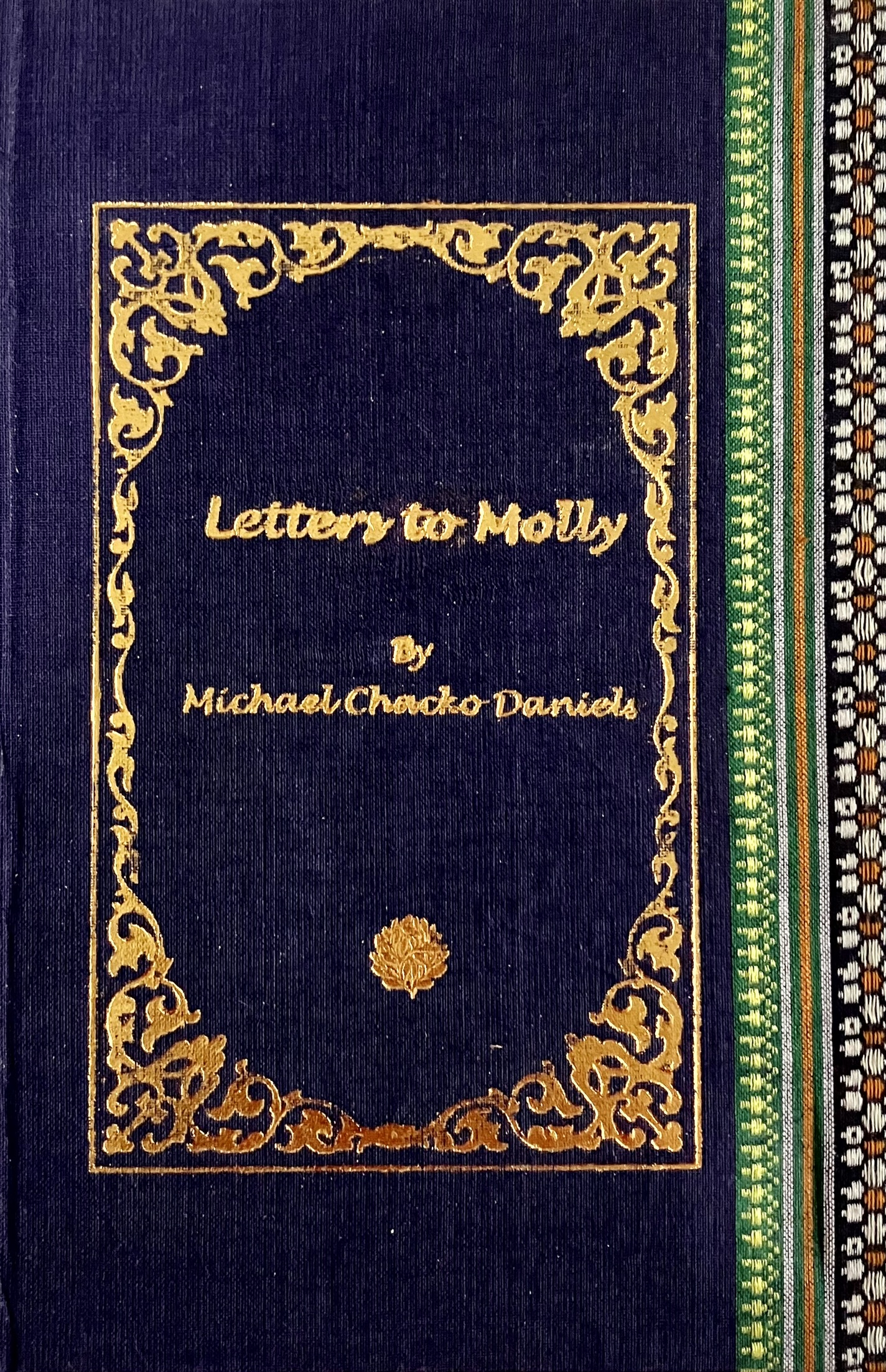It gives me great pleasure to announce the arrival from India of a parcel of my latest book: Letters to Molly (Writers Workshop, India).
The Molly in the title of this book was my late sister Molly A. Daniels-Ramanujan, the extraordinary poet-maker and teacher of English literature who lives on in the hearts and writing of the thousands of students that she inspired worldwide.
Born in Tiruvalla, Kerala, in 1932 in an ancient Malayali Syrian Christian community, Molly studied English literature in Bombay and taught it from 1956 for several years in New Delhi before coming to the United States in 1961 to study at Indiana University on a Fulbright Fellowship.
In the latter part of the 20th century, after chiefly being known for having been the wife of A.K. Ramanujan in a world, including the literary world, built on the subordination of women, Molly Daniels broke out on her own merits and hard work, and was, by her own rights and on her own terms, a celebrated writer, editor, and much-loved teacher.
Commenting on Molly's 1978 novel The Salt Doll, Nobel Laureate Saul Bellow said:
“No one is quite so informal, so spontaneous, so fluent, so fresh, so breezy and so salty as Molly Daniels Ramanujan in The Salt Doll.”
Women Unlimited republished The Salt Doll in 2018.
Here is a snapshot of Molly's achievements:
“She earned a doctorate from the Committee on Social Thought at the University of Chicago in 1986. Daniels taught fiction and poetry writing in the Continuing Education Program at the University of Chicago and also founded and taught at her own school, The Clothesline School of Writing, in Chicago. Over 3,000 students went through her program between 1979 and 1999, when she semi-retired. She published three books of fiction, two books of criticism, a creative writing manual, a book of short biographies of people who live in Ithaca, and she edited eight books of poetry and prose.” (The Ithaca Journal)
The Clothesline School of Writing went on till 2010.
Researchers will be interested to know that Molly’s works are listed on page 135 of Letters to Molly.
A never before seen sketch of Molly by her daughter Krittika Ramanujan is a highlight of the book, as are the illustrations by Krittika’s husband Aaron Bass.
The book Letters to Molly emerged from my on-going correspondence with my sister Molly in the final years of her life. As I write in the book: "During Molly’s final years, unsteady on her feet after a series of strokes, she stayed at home more often than not, and I tried as best as I could from San Francisco to send her touches of the larger world, as she had for me when I was growing up in Bombay in the 1950s, and Westerns—books and comics—threatened to have me in thrall forever."
For more on my poetry in Letters to Molly, here’s Oakland Poet Ralph Dranow’s Foreword to the book:
Foreword
There’s Much to Treasure Here,
Says Ralph Dranow
Michael Chacko Daniels’ new poetry collection—Letters to Molly: Lady on a Red Leash & Other Poems—discovers poetry in the seemingly mundane events of everyday life. His eyes and ears are wide open, as he captures in precise detail the quirky behavior and dialogue of people he meets at San Francisco farmers markets, on buses and trolleys, and hiking trails.
He’s a consummate storyteller, and many of his poems, which are based on emails he sent to his sister Molly, are miniature stories, laced with humor and are often quite touching.
In the poignant, offbeat “The Gallant Dad with Twins on a Trolley,” a father on an electric trolley has one child strapped to his chest and its twin to his back, as he’s taking them to where his wife works, so she can suckle them. The narrator is greatly concerned about the twins’ safety, and I was holding my breath as well.
In “I Come for Your Dried Plums,” Daniels chronicles the misadventures of a customer who’s a chronic complainer. The poem ends with the man’s disgruntled words:
“You shouldn’t have given me dried plums to taste,
If you don’t have any to sell. That’s so wrong,” he says.
“How can I eat your kiwis,
When I dreamt of your dried plums all week long?”
Daniels has many more arrows in his quiver. In addition to their engaging content, the poems are a delight to read because of Daniels’ visual artistry, the varied and imaginative spacing of his lines, and the different fonts occasionally employed, all used to great effect. Some of the poems are beautifully arranged, such as “A Walk to the Mild Side,” which is shaped like an wine glass.
Poems such as “The Land Imagined” and “Tastes More Like Bombay” are simple and understated, yet succeed in revealing, as many poems in this collection do, the love between Daniels and his sister.
And then there are poems like “What?...Bombay?” that reflect Daniels’ impressive grasp of Indian cultural and political history.
He also writes evocative haikus, such as:
Dry brown palm frond joins
ripped green magnolia branch
in Polk Gulch gutter
There’s much to treasure in this rich collection.



